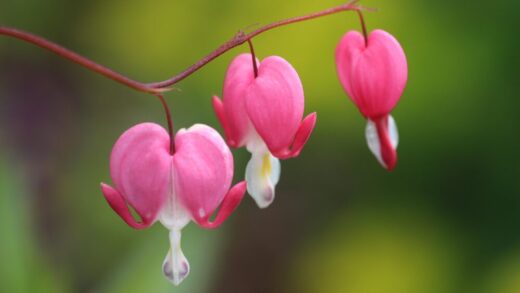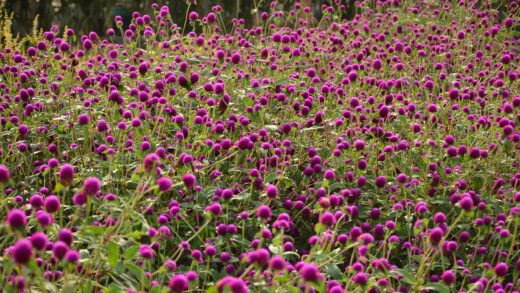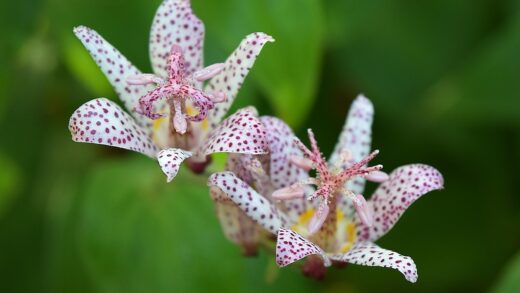Providing the correct light conditions is one of the most fundamental aspects of successfully cultivating Arum maculatum. As a quintessential woodland plant, its entire life cycle has evolved to take advantage of the unique and changing light patterns found on the forest floor beneath a canopy of deciduous trees. It is not a plant that tolerates bright, direct sunlight; instead, it thrives in the cool, dappled shade that characterizes its native habitat. Understanding and replicating these specific light requirements in a garden setting is paramount to achieving a healthy plant with lush foliage and its distinctive, intriguing flower.
The ideal location for a cuckoo-pint is in partial to full shade. This means it should receive no more than a few hours of gentle, indirect morning sunlight, and should be completely protected from the intense, harsh sun of the afternoon. Planting it under the canopy of large trees or mature shrubs is a perfect way to mimic its natural environment. The leaves of the overhead trees act as a natural filter, creating the dappled light conditions in which the plant flourishes. This not only protects the foliage from scorching but also helps to keep the soil cool and moist.
The plant’s growth cycle is perfectly synchronized with the seasonal changes in light in a deciduous woodland. It emerges in early spring, a time when the branches of the overhead trees are still bare. This allows the plant to receive a period of brighter, though still indirect, light, which fuels its initial burst of growth and the development of its flowers. As spring progresses and the tree canopy fills out, the amount of light reaching the forest floor is significantly reduced, plunging the cuckoo-pint into deeper shade for the summer months, by which time its main growth phase is complete.
In a garden context, this means that the north or east-facing side of a house, wall, or hedge can also provide a suitable location. These positions are naturally shaded for much of the day, protecting the plant from the sun’s most powerful rays. The key takeaway for any gardener wishing to grow this plant is to resist the temptation to plant it in a sunny border. While many flowering plants crave the sun, Arum maculatum is a true shade-lover, and its health and performance are directly tied to being sited in the right, low-light conditions.
The natural woodland habitat
To fully grasp the light needs of Arum maculatum, one must visualize its home on the floor of a temperate deciduous forest. This environment is characterized by a dynamic interplay of light and shadow that changes throughout the day and across the seasons. The dense canopy of trees like oak, beech, or maple creates a ceiling that intercepts the majority of direct sunlight, especially during the summer months when the trees are in full leaf. The light that does filter through is soft, diffuse, and constantly shifting as the leaves move in the breeze.
More articles on this topic
This low-light environment has shaped the plant’s physical characteristics. The large, broad, arrow-shaped leaves of the cuckoo-pint are an adaptation designed to maximize the capture of the limited light that reaches the forest floor. A larger leaf surface area allows the plant to photosynthesize more efficiently in shady conditions. The often dark green coloration of the leaves is also indicative of high chlorophyll concentration, another adaptation for effective energy production in low light.
The seasonal timing of its growth is a clever strategy to exploit a temporary window of opportunity for more light. By emerging early in the spring before the tree canopy closes over, the plant gets a crucial head start. It completes its most energy-intensive activities—leaf production and flowering—during this brighter period. This strategy allows it to thrive in a niche where competition for light is fierce later in the season.
Therefore, when we select a planting site in the garden, we are not just looking for any shade; we are aiming to replicate this specific type of “woodland shade.” This means a location that is bright but not sunny in the spring, and deeply shaded during the summer. This is why planting under deciduous trees is so ideal, as it perfectly recreates this seasonal light cycle. Planting under evergreen trees, which cast dense shade year-round, can also work, but the initial spring growth may be slightly less vigorous due to the reduced spring light.
Optimal light: Dappled shade
The term “dappled shade” perfectly describes the ideal lighting for Arum maculatum. It refers to the shifting pattern of sunlight and shadow that is created when sunlight filters through the leaves of deciduous trees. It is not the deep, dark shade found under dense evergreens or on the north side of a high wall, nor is it the full, direct sun of an open field. It is a soft, gentle, and moving light that provides enough energy for photosynthesis without the stress of intense heat and radiation.
More articles on this topic
In a garden with mature deciduous trees, creating the perfect spot is as simple as planting beneath their branches. The specific amount of light will vary depending on the density of the tree’s canopy. Trees with a lighter, more open canopy, such as a birch or a locust, will provide a brighter dappled shade, while trees with a denser canopy, like a maple or a beech, will create a shadier environment. Arum maculatum is adaptable and will perform well under either, as long as direct sun is avoided.
For gardens without suitable trees, dappled shade can be recreated in other ways. For example, planting on the east side of a building allows the plant to receive some gentle morning sun before the structure casts shade for the rest of the day. Planting near a trellis or pergola covered with a deciduous vine can also create a similar filtering effect. The goal is to buffer the plant from the direct, overhead sun of midday and the intense heat of the afternoon.
It is important to observe the pattern of light in your garden throughout the day and at different times of the year before choosing a final planting spot. What appears to be a shady spot in the morning might be in full sun by the afternoon. A location that is shady in summer might be quite sunny in early spring. Finding that perfect balance—a spot that is protected from the harshest sun yet still receives enough ambient light to thrive—is the key to success with this classic woodland species.
The effects of too much sun
Exposing Arum maculatum to too much direct sunlight is one of the most common and damaging mistakes in its cultivation. This shade-loving plant is simply not adapted to handle the intensity of full sun, and the consequences of planting it in an overly bright location are quickly apparent. The most immediate and visible symptom of excessive sun exposure is leaf scorch. The leaves will develop brown, dry, or crispy patches, particularly along the edges or in areas where the sun’s rays are most concentrated.
Beyond the aesthetic damage of scorched foliage, too much sun places the entire plant under significant physiological stress. The intense light can cause the leaves to lose water more rapidly than the roots can absorb it, leading to wilting even if the soil is moist. This constant stress weakens the plant, making it more susceptible to pests and diseases. A sun-stressed plant will have its energy reserves depleted as it struggles to cope with the unfavorable conditions, rather than using that energy for healthy growth and flowering.
In a location that is too sunny, the plant’s growth will likely be stunted. The leaves may be smaller and paler than those of a plant grown in the shade, and it may fail to flower altogether. The plant may survive for a time in a sunny spot, but it will never thrive or achieve the lush, vibrant appearance it is known for. The soil in sunny areas also tends to be warmer and drier, which is the opposite of the cool, moist conditions that the cuckoo-pint’s root system prefers.
If you have mistakenly planted a cuckoo-pint in a sunny location and it is showing signs of stress, the best course of action is to move it to a more suitable, shady spot. The ideal time to transplant is in the late summer or autumn when the plant is dormant. Dig up the tuber carefully, causing as little disturbance as possible, and replant it immediately in a well-prepared, shaded location. This will give it the opportunity to recover and flourish in an environment that meets its fundamental needs.
Consequences of insufficient light
While Arum maculatum is a shade plant, it is possible for the shade to be too deep, leading to a different set of problems. Although it can survive in very low light conditions, its growth and performance will be compromised. Insufficient light, such as the dense, year-round gloom found under a thick stand of evergreen trees or in a narrow space between two buildings, can lead to weak and spindly growth.
The most common consequence of inadequate light is a failure to flower. The plant may still produce leaves each spring, but it may not have gathered enough energy from the limited light to initiate the formation of its spathe and spadix. Photosynthesis is the process that creates the energy reserves stored in the tuber, and if light levels are too low, the plant will prioritize its survival and vegetative growth over the energy-intensive process of reproduction. A mature plant that consistently produces leaves but no flowers is often a sign that it needs a slightly brighter location.
In very deep shade, the foliage itself may also suffer. The plant may produce elongated, weak leaf stems (petioles) as it stretches in an attempt to find more light, a phenomenon known as etiolation. The leaves may be a very dark green but may be smaller and more sparsely produced than on a plant in a brighter location. This weak, leggy growth can make the plant appear less vigorous and attractive.
Finding the right balance is key. The ideal site is one of bright, indirect light or dappled shade, rather than deep, dark shade. If you have a cuckoo-pint that is failing to thrive in a very shady spot, consider moving it to a location that receives a little more ambient light, such as near the edge of a tree’s canopy rather than directly under its dense center. A small increase in light levels can often make a significant difference in the plant’s vigor and its ability to produce its fascinating and unique flower.


















